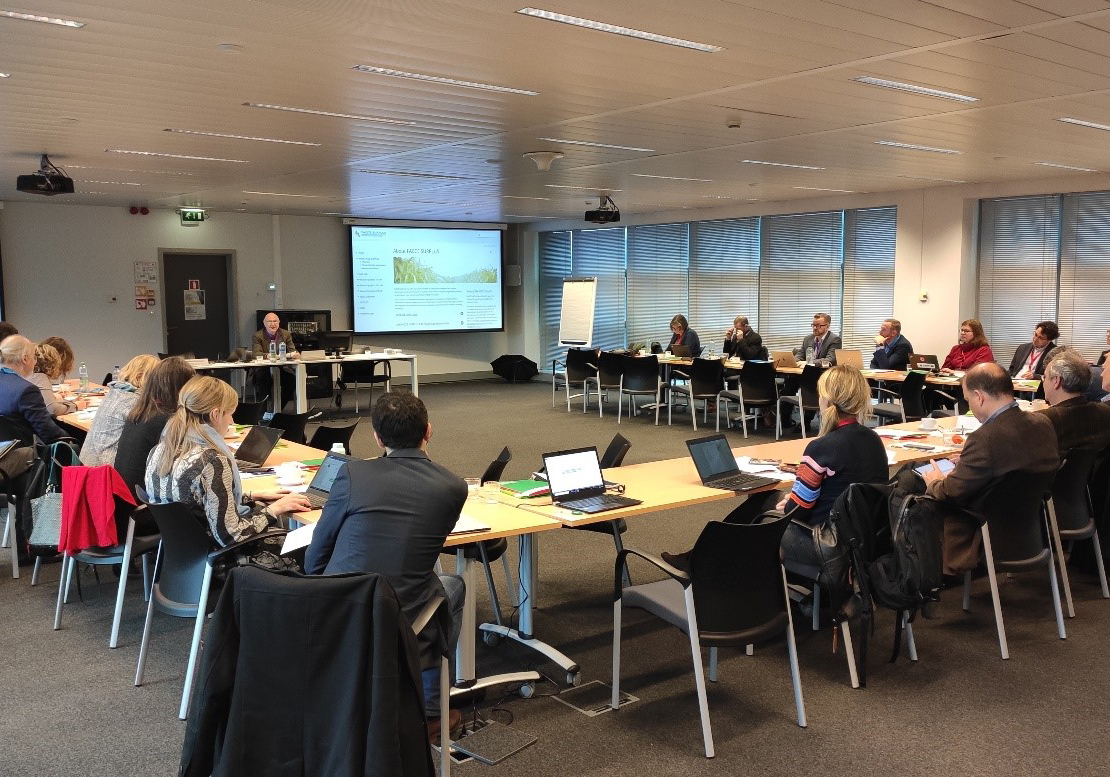Lessons from 15 years of bioeconomy
The rise of bioeconomy in the early twenty-first century - and lessons for the future - was the topic, when Dr. Christian Patermann, the “father” of European bioeconomy, gave a presentation at the FACCE SURPLUS final conference in Brussels.

At the FACCE SURPLUS final conference, Dr. Christian Patermann took a step back in time to the very beginning of the concept of bioeconomy – and led the audience through time and into the future of bioeconomy.
The birth of bioeconomy
As a former Programme Director for “Biotechnology, Agriculture & Food” Research at the Research Directorate-General of the European Commission from 2004 to 2007, Dr. Christian Patermann was responsible for the elaboration of the new concept of the Knowledge Based Bioeconomy (KBBE) - today known as bio-based economy or more simply bioeconomy in Europe.
- In 2004, biotechnology was at the center of attention, and the knowledge-based economy was the foundation of the Lisbon strategy. While we were preparing the 7th Framework Programme, we faced the challenge that agricultural research had been practically eliminated within the 6th Framework Programme, and interest in food, forestry and fisheries was low, Dr. Christian Patermann said and continued:
- We discovered that the Ministers of Research and Technological Development at OECD in a strategic document on “Biotechnology for sustainable Growth and Development“ from January 2004, had stated that it could be useful to think about the development of a “biobased economy “. A footnote defined bioeconomy as an “economy that uses renewable bioresources, efficient bioprocesses and eco-industrial clusters to produce bioproducts, jobs and income.” We asked our colleagues in Paris, whether they wanted to pursue this, but no one really knew, what the ministers had meant with it.
Nevertheless, this turned out to be the beginning of bioeconomy:
- We started to discuss how to use the new knowledge on biological resources as the base for a new economy concept tied to the concept of sustainability, which could also raise political interest for this area. This led to a number of relevant chapters in the 7th Framework Programme in 2005, and we went public with the first international conference on knowledge-based bioeconomy. In 2007, with the start of the 7th Framework Programme, we had more than 2 billion euro of funds, said Dr. Christian Patermann.
15 years later
More than 15 years have gone since the introduction of bioeconomy. Meanwhile, bioeconomy has gained ground not just in Europe, but all over the world:
- The European Union embraced the idea of bioeconomy and launched its first bioeconomy strategy back in 2012. Since then, it has become a hot topic across the globe. More than 50 countries and regions in the world have national and regional bioeconomic strategies. It is a huge success, and we did not expect this 15 years ago. With the new European Green Deal, launched in the end of 2019, further legislation on bioeconomy will be introduced, and bioeconomy will therefore play a pivotal role in achieving the purpose of making Europe climate neutral by 2050, said Dr. Christian Patermann.
Lessons for the future
Dr. Christian Patermann stressed that although the bioeconomy has developed greatly during the 15 years four integral parts of the concept remain the same and should remain the same in the future:
- The production of renewable biological resources and their conversion into the 4 F’s: Food, Feed, Fiber and Fuel continue to be the cornerstones of bioeconomy. Pointing to the future, it also remains necessary to stress that there should be no priorities among the four. We need to act in an equal way with respect to all four.
The importance of equality between the food, feed, fiber and fuel is part of Dr. Christian Patermann’s four lessons for the future of bioeconomy:
1) Bioeconomy is not the savior of our planet. Nevertheless, bioeconomy has the potential to contribute to sustainable solutions for our planet.
2) Biological resources should remain the central element of bioeconomy.
3) Circular economy is neither the mother nor the home of bioeconomy. Circular economy is not superior to bioeconomy. There is rather a partnership between both.
4) A high variety of bioeconomies exists worldwide. There should be no hierarchy or priority setting between the different bioeconomies, just as there should be no hierarchies among insects, plants etc. The bioeconomical priorities must be determined by a SWOT analysis in each country.
